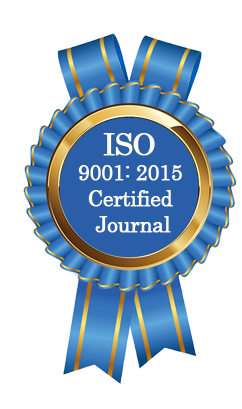| All | Since 2020 | |
| Citation | 105 | 60 |
| h-index | 4 | 4 |
| i10-index | 3 | 2 |
WJAHR Citation 
Login
News & Updation
Best Article Awards
World Journal of Advance Healthcare Research (WJAHR) is giving Best Article Award in every Issue for Best Article and Issue Certificate of Appreciation to the Authors to promote research activity of scholar.
Best Article of current issue
Download Article : Click here
Indexing
Abstract
D DIMER – A NOVEL PREDICTOR OF DISSEMINATED INTRAVASCULAR COAGULATION IN ACUTE LEUKEMIAS. (AN OBSERVATINAL STUDY ON 81 ACUTE LEUKEMIA CASES)
*Dr. Aastha Jain, Dr. Vanita Kumar and Dr. Komal Baghla
ABSTRACT
Background: Leukemias are a group of life-threatening malignant disorders of the blood and bone marrow. Leukemia is the 10th most commonly diagnosed cancer worldwide with an incidence of 3, 51,000 new cases (2.8%). In India, lympho haematopoietic malignancies constitute 9.5% of all cancers in men and 5.5% in women, and the incidence of ALL and AML are 35% and 15% of all hematological malignancies respectively. Disseminated intravascular coagulation is responsible for most cases of clinically significant bleeding or thrombosis in acute leukaemia. Uniform criteria for diagnosing DIC were not present untill the ISTH proposed its criteria in 2001. Although this criterion was able to identify overt DIC but failed to diagnose cases of preclinical DIC. It has been revealed that haematological malignancies can change the levels of plasma molecules involved in coagulation and fibrinolysis, such as D-dimer. Acute myeloid leukemias (AML) are more commonly associated with DIC, but the association with acute lymphoblastic leukemia (ALL) has been recognized. D-dimer is a molecule as result of breaking down of excessive fibrin formation from the activation of coagulation system. There is evidence of increased activation of coagulation in patients with acute leukemia which is reflected by the increment of D-dimer levels. D dimer levels alone can be a significant marker to predict DIC in pateints of acute leukemia. Materials and Methods: We adopted a single criterion by using a single cutoff for D-dimer at a level of more than 0.5microgram/Ml (500 nanogram/mL). All patients with d dimer above 500 nanogram/ml were evaluated further on day 7 after recieving chemotherapy to find out further rise in d dimer levels. Observation: In this study, we found elevated D-dimer levels in acute leukemia patients at initial diagnosis. 46 out of 81 subjects (56.79%) had increased D- dimer levels, with a median of 1,000 (range 500-9,800) ng/mL. Further classification of subjects based on their diagnosis showed increased D dimer levels in 27 cases (75%) out of 36 with AML, and 19 cases (42.22%) out of 45 cases with ALL. The median D-dimer levels of AML patients was 950 (range 100-14,700) ng/mL and of ALL patients was 300 (range 100-3,800) ng/mL. D dimer levels post induction chemotherapy were again analysed on day 7, and 49 cases (60.49%) showed elevated D dimer levels with a median of 1,000 (range 500-14,700) ng/mL. Of these 49 cases, 31 cases (63.26%) belonged to AML subtype while the rest 18 cases (36.73%) belonged to ALL subtypes. The D dimer levels were found elevated above normal in both ALL and AML cases. Discussion and Conclusion: we find activation of coagulation system in children at the time of diagnosis of acute leukemia. More than half of patients with acute leukemia in our study show increased D-dimer levels at the time of initial diagnosis in both subtypes of leukemia establishing that ALL similar to AML predisposes patients to various hemostatic abnormalities which can lead to thromboembolic events and DIC is such patients which is further aggrevated by induction chemotherapy which casues further rise in D dimer levels due to tumor lysis, and such pateints often present with bleeding manifestations, some of which can prove life threartening. Hence serial evaluation of D dimer levels in acute leukemia patients can predict hemostatic complications.
[Full Text Article] [Download Certificate]
